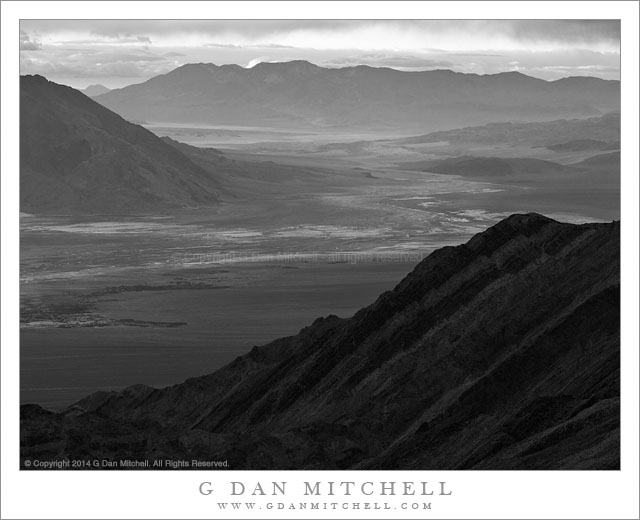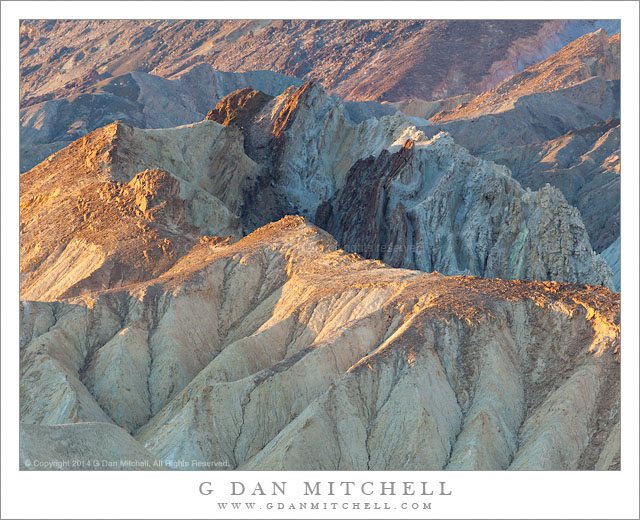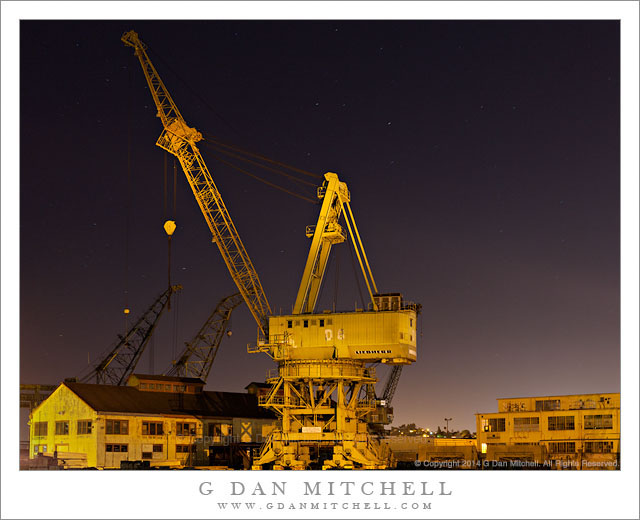
Morning Storm Clouds, Death Valley. Death Valley National Park, California. April 2, 2014. © Copyright 2014 G Dan Mitchell – all rights reserved.
Southern Death Valley, morning view from the Panamint Range as storm clouds gather.
This photograph reminds me of the immense scale of the Death Valley landscape. Photographed from high in the Panamint Range very early on a morning when a storm was building—it would later snow at our location—the contrast between the cloud-shadowed foreground and the early morning light in the distant valley emphasizes the vast distances in the scene. The light began closing down essentially right at dawn as the clouds of a Pacific weather front came in from the west behind us. (As I made this photograph light snow was falling on the ridge above and behind my position.) The dark clouds building above us along the crest of the Panamint Range were beginning to extend out over the Valley and build over the succession of ranges extending into the distance.
It didn’t. ;-) There was a brief moment of brilliant colorful light over ridges far to the east as the sun moved through a very narrow gap between distant ridges and thickening clouds, but then it was gone, leaving behind light that was somewhat murky. Occasionally a beam of light coming through a less-dense portion of the clouds would try to light up a peak or a ridge, but the effect was faint and ephemeral. Far to the south, far beyond the dark nearby ridges above Trail Canyon and near the lower end of Death Valley, where the valley curves away from mountains, it was a bit lighter—but it was clear that a storm was coming, and within an hour or two we found ourselves in a Panamint Range snow storm.
 G Dan Mitchell is a California photographer and visual opportunist whose subjects include the Pacific coast, redwood forests, central California oak/grasslands, the Sierra Nevada, California deserts, urban landscapes, night photography, and more.
G Dan Mitchell is a California photographer and visual opportunist whose subjects include the Pacific coast, redwood forests, central California oak/grasslands, the Sierra Nevada, California deserts, urban landscapes, night photography, and more.
Blog | About | Flickr | Twitter | Facebook | Google+ | 500px.com | LinkedIn | Email
Text, photographs, and other media are © Copyright G Dan Mitchell (or others when indicated) and are not in the public domain and may not be used on websites, blogs, or in other media without advance permission from G Dan Mitchell.



